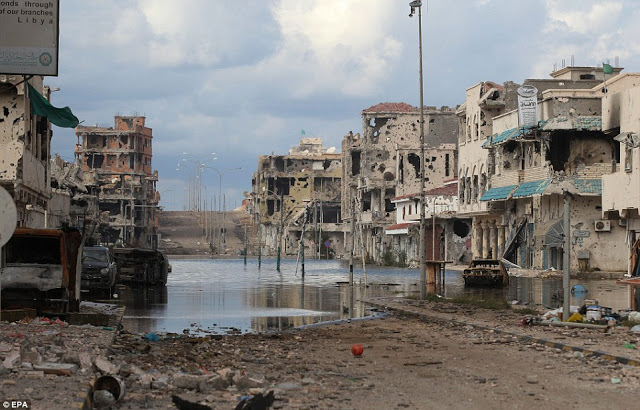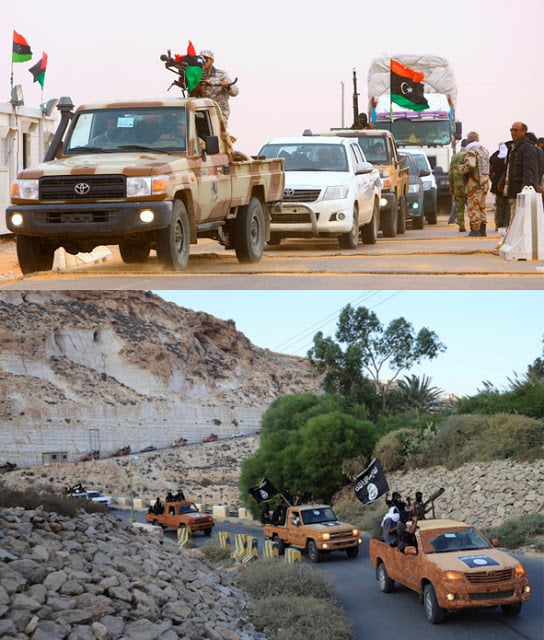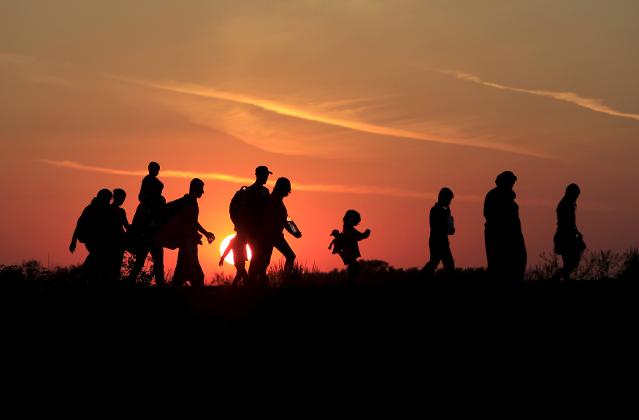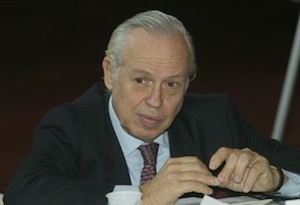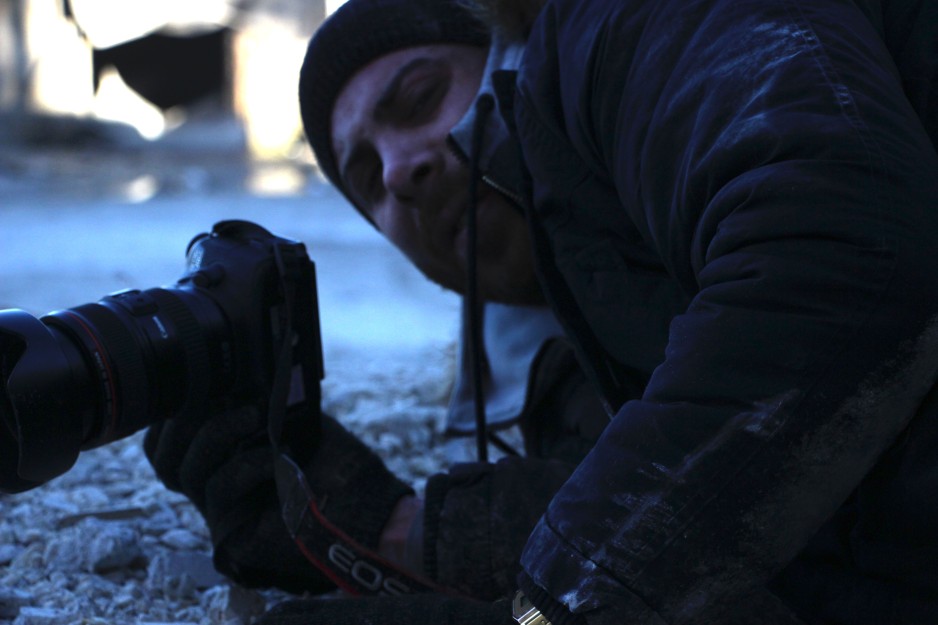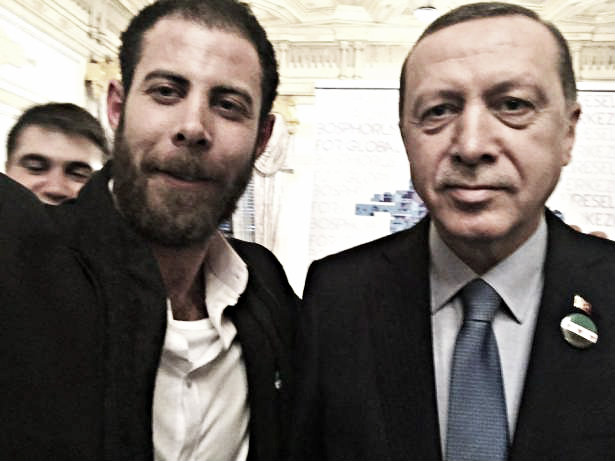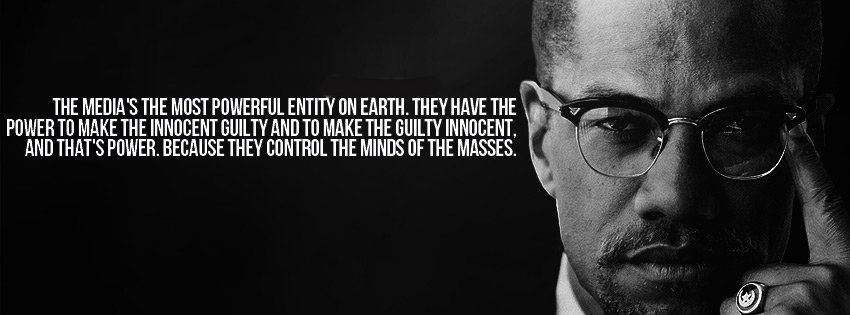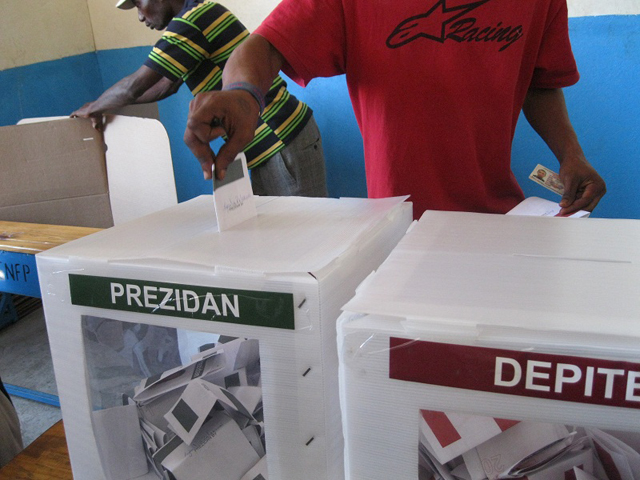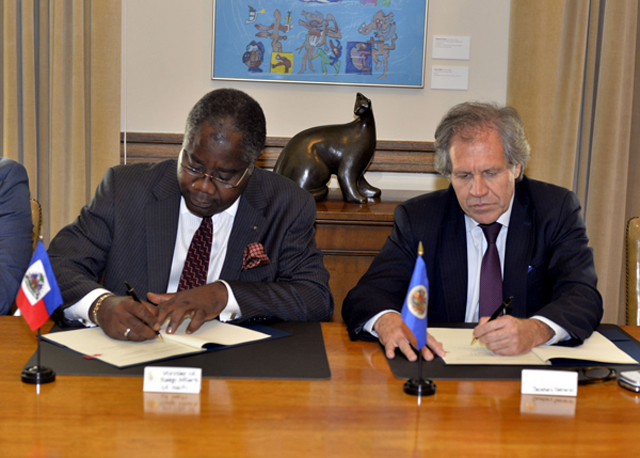Richard Dolan covers false flag operations analyzed as a distinctively modern phenomena, post WWI; the planet being stolen by a transnational corporate financial class; ideological false flags including religions and nationalism; the propaganda spectrum including cultural values, educational system and news media; a war of corporate cultural control and imposition of a global police state; US Psychological Operations Manual; white, grey and black PSYOPs; regime change and color revolutions; NGOs; characteristics of a false flag.
False flag operations analyzed as a distinctively modern phenomena, post WWI; the planet being stolen by a transnational corporate financial class; ideological false flags including religions and nationalism; the propaganda spectrum including cultural values, educational system and news media; a war of corporate cultural control and imposition of a global police state; US Psychological Operations Manual; white, grey and black PSYOPs; regime change and color revolutions; NGOs; characteristics of a false flag.
This is Guns and Butter.
We have 9/11 in which the hammer comes down and beats you over the head for the rest of your life with a big national security stick so that people learn to duck their head and not speak up, because … bad idea now. You know, we now have, I think 20% of the American population is 15 or younger. I think that’s the number. These are people who grew up – they don’t know anything other than post-9/11 America. And actually, let’s say that anyone who’s under 25 doesn’t, really. They were kids. That’s probably, what, a third or more of the population. It’s all going away. The whole past of the United States, the whole idea of rule by the people, of privacy. We have an entire new generation who are growing up without any of that. It’s all gone.
I’m Bonnie Faulkner. Today on Guns and Butter, Richard Dolan. Today’s show: Understanding False Flag Operations in Our Time. Richard Dolan is an author and historian. He is nearing completion of a groundbreaking book, A History of False Flag Operations, which will explain one of the most pernicious developments of our time: how clandestine agencies secretly engage in violence and destruction in order to promote their agendas. He has published four books and numerous articles on anomalous phenomena, suppressed science, secret space programs, breakaway civilizations, the intelligence community and similar subjects. He is best known as the author of two volumes of history, UFOs and The National Security State. He studied US Cold War strategy, Soviet history and international diplomacy. Today’s presentation, Understanding False Flag Operations In Our Time, is from the Architects of the New Paradigm Conference in San Rafael, California, January 16th, 2016. Richard Dolan.
* * * * *
In addition to writing books I’ve spent many, many years doing private consulting work. Basically I’m an independent writer and I would meet with individuals one on one, thousands and thousands of them. It was a great experience with me just to sit down and talk with someone about their life, about their career, about their anxieties and everything else.
What I’ve always noticed is that when you start scratching the surface of someone’s worldview you find very quickly that they, just as you, have an understanding that there’s something not right with the world around us. Not everyone has the motivation or the education or the background to kind of dive into this like a madman obsessed with getting to the truth, but they know. They feel it in their bones. There’s something wrong, desperately wrong, with the state of the world, and it involves a feeling that they’re not in control anymore.
In particular I think we can see this in the last 20 years in the United States where we’ve had severe economic dislocation. I live in the northeastern part of the United States and I’ve gotten to see really the obliteration of a company that informed the town that I live in. That’s Eastman Kodak in Rochester, New York, and I just watched Kodak go poof over the past decade and a half. But I think you can see this story everywhere, in many places of the US.
It accompanies a kind of loss of hope, a loss of confidence, a feeling like is the future really going to be worth something? In addition to that, those people who try to learn about their world by turning on the television and watching CNN, inevitably what they find is that they’re totally confused about what is happening. It just seems like one damn thing after another, one terrorist thing doing this and one national security thing doing that and these crazy people, why do they hate us… and there’s really no sense of understanding when you plug into the establishment news media. There doesn’t seem to be like how do we solve any of this, how do we fix this, how do we really get to a better world, why can’t these people just like freedom and democracy like we do? This is the kind of nonsense that … There doesn’t seem to be a way out of it.
I would say that all of that confusion, all of that hopelessness is by design. I believe this now. I don’t believe, as I might have years past, that the people on top, they’re trying to do their best but it’s a tough world out there. No. No. No. They want you to feel helpless. They want you to be confused. Let’s talk about why.
One reason why is that the whole planet is being stolen. You’ve got this many people who want to own every single thing that’s worth owning in this planet – all the water, all the genetically modified foods they want to shove down your throat, all the minerals in the ground. They want every single thing. And they’re getting it. They’ve got it, actually, and they just want more. That’s the way it’s happening.
It’s a transnational corporate financial theft of everything. It’s a war. When there’s a war, the people who are running that war really don’t want you to be able to react to it. They don’t want you to be cognizant of what is happening. And they want you to be quiet about it. They want you to obey and be compliant.
Therefore, they must rule by means of deception. Because if they were to out and out say to you, “Yeah, we’re going to steal all your stuff,” you might have a thing or two to say about it. So what must happen is a kind of ideological false flag or an ideological psych on you and me. This is exactly, I think, what we are seeing in the world.
Now, it’s certainly not true to say that this is a new development in a larger sense. Human history has always been informed by intense hierarchy. In that sense you could say mind control has always existed in the sense that elites have typically kind of created worldviews by which the great masses of humanity would look to the authority for guidance and for salvation. I think the obvious example of this we could see is various religions of the world but I would also include things like nationalism and other kinds of ideologies that let us say encourage and enforce compliance among the population.
I think we can agree that false problems have, since forever, since throughout human history, been kind of created in order to accommodate a pre-arranged solution to that problem, things that I would call an ideological false flag. What I mean by that is not an instance where a government or an intelligence agency in ancient times would kill people and blame it on another party and scare the heck out of people and enforce their rule. No, but by creating a mindset.
Think of something like the Inquisition. That’s a perfect example of an ideological false flag where back in, I think it was, 1487, a book called Malleus Maleficarum was published. This was a guidebook, really, on how to identify, prosecute and kill witches. That’s what that book really was. As a result of that, over the next century or so about 1 million European women were executed for witchcraft, about then. It did several things. One is it created a lot of fear among the population. “Oh, my God, witches. Get rid of those people!” It enforced the authority of the ecclesiastical Church at the time, at least for a certain while until there was a reaction against it. And it also got a lot of power and money for the Church. Families of witches would actually pay through indulgences to minimize the amount of time in Purgatory or get them out of Hell. This actually really happened. It also allowed for land grabs by the Church of the families of the witches, very much like the US government does today with people suspected – this is really the truth – of various crimes. They take your property. This is what the Church did. So that I call a false flag. The War on Terror is an ideological false flag.
That’s an old, old part of human history. I would say in our world today there is a manner in which they’re trying to get inside your head, and I call it a propaganda spectrum. There are all kind of forms of control but they get progressively more pernicious as you go down the list.
The most fundamental method by which society, that you are expected to conform to society, would be what we might call cultural values. That’s when you go to school and you learn to pledge allegiance with your hand over your heart and you go through the educational system. Even 100 years ago Bertrand Russell was talking about as a method of conformity. More recently we have really great visionaries like John Taylor Gatto who has talked very much along the same lines, of the educational system as a system of control over your head. Get inside your head and make you obey, make you an obedient worker.
So that’s the cultural values. Not all of it is necessarily evil. We can all recognize that a functioning society would require a kind of cultural consensus, but you can still see how the implementation of certain cultural values could at least provide a foundation of obedience.
Beyond that, though, I think what is a little bit more pernicious is what we might call cultural distractions. This is the phenomenon of the Kardashians and things like Dancing With The whatever they’ve got on this week or Monday Night Football, or all the stupid, meaningless stuff that is poured into everyone’s head every single day – truly, literally meaningless information that just goes right in. And we all like entertainment. I’m watching back episodes of “The Sopranos” so I’m just as guilty as anyone else. Those are my people. I’m from the Northeast. “You know what I’m talking about? Yeah, I know what you’re talking about.”
But I think when you get into a level of distraction that is so mindless as what we obviously see around us, this is a signal. It’s a signal for you to look over here, don’t look over there. There’s something important going on over here so look at this shiny little trinket. It goes on and on and on and on and it never stops, and it never will stop as long as this system is in place as it is.
Beyond that, though, there’s still always people even in what we would call the ordinary, out-there society, all the other people in this country, who still want to feel like they’re being informed, and that’s when they turn on the TV and they watch CNN or Fox or NPR. Hey, why not? Because look, NPR was run for years and years by a man who was running CIA propaganda, and that’s a fact, so NPR’s really no different. Yeah. It’s really true. People think, “Oh, I’m so educated. Fox sucks. I’m going to listen to NPR because they’re intelligent.
Well, you know, here’s the thing about that, I’ll just say as an aside. Our whole cultural narrative these days, our whole cultural discourse in politics seems to me to be on nothing more than cultural issues. Not that they don’t matter, but it’s like if you’re a liberal that means “I support transgender rights.” If you’re a conservative, “I don’t support transgender rights.” “I do support Black Lives Matter.” “I don’t support Black Lives Matter.” “I do support smoking weed in Colorado.” “I don’t support smoking” … If this is what we’ve come down to in our politics, we’re done. It’s over – over, over. Stick a fork in us, it’s done because, as I say, there’s a serious war happening. It is a war of corporate cultural control and imposition of a global police state over you and over your children, over your grandchildren, for all of time. That’s the war. If we’re not talking about that, then we’re just wasting our time. That’s my view.
Anyway, for that third level of control and spin there’s the news media, people who want to be informed, so they’ll turn on CNN and become confused forever, because really, that’s a system that is all about censorship, spin, propaganda, control. CNN … Why is it that CNN is on at every single gate at every single airport in the United States? Why? Is it like every airport manager in the country is like, “Oh, wow. I totally love CNN. I want to inform…” I don’t think so. They’re a private company owned by Time Warner – clearly there’s a nice sweetheart deal – and because they are the propaganda voice of the US State Department and CIA. That’s the only reason they’re on. That’s the only reason you see them at every gate. So that’s the third level. I would say those first three levels of propaganda account for probably 95% of the control mechanisms in place to keep you in your place. Most probably.
But then, every now and then you need a little bit more something, and that’s when we’re talking about psy-ops, psychological operations, covert ops, color revolutions, regime change down to the “Shock Doctrine” type of events, if anyone’s read Naomi Klein. I’m a big fan of that book. And then down to false flags, which I think is the most pernicious of those. I’ll talk a little bit about these in a little more detail.
With psy-ops, psychological operations, US military, this is in their playbook. This is an official thing that our military does, and other militaries do it, too. It’s not just us. It’s interesting that the Defense Department will have in this psychological operations manual three different types of ops. They call them white, grey and black psy-ops.
White psy-ops is pretty straightforward. It’s not really even a psych job on the world. It’s basically an official or a virtually official statement of the United States government just getting their message out to the world. And you know it’s from the US government and it’s relatively straightforward, even if you don’t agree with it.
Grey psy-ops is a little more interesting and very pervasive in our world today, as it’s always been. If you’re familiar with something like Operation Mockingbird, that would be a grey psy-op. That would be something like using journalists or using other voices that are not officially part of the US government but basically having them give the US government perspective, pretending it’s coming from some other voice. That’s a grey psy-op, and that’s a very, very widespread phenomenon.
The Pentagon, for example, which spends billions of dollars every single year managing their social image – they do – that includes things like not simply having close relationships with professional journalists who spin the news in their favor, but it also includes paid trolls, which I call sock puppets. This is true. Let’s say you read news articles and you look at all the comments below and you see these real whackjobs out there. Some of them really literally are sock puppets. That means you’d be a Pentagon employee and you’d be in charge of X number of profiles on the social media and on the message boards. That’s what you would do. You would disrupt, you would persuade, you would cajole, but in fact, you’re a paid employee. That would be a grey psy-op, as well.
Then there’s black psy-ops, and this is where we’re really getting into some serious stuff. This is according to the US Psychological Operations Manual: A black psy-op is something that comes from a US government source but “appears to emanate from a source hostile in nature. US government would deny responsibility.” That’s a false flag. I don’t know how else you can describe it. Something that the US government does but seems to come from one of the “bad guys.”
One of the things about black psy-ops in the manual is that – at least they state – this is not actually a function of the United States military but actually that black psy-ops are a function of the US intelligence community, and that kind of makes sense. I guess the point is that false flag black psy-ops are in the playbook of the United States. It’s just worth keeping in mind.
Something like regime change or the so-called color revolutions, these can include false flags, which I’m going to get into a false flag in just a moment in case you’re still wondering, “What the heck is a false flag?” Regime change is something that the United States has truly perfected to the extent possible over many decades. They did it back in 1953 in Iran. Essentially what that was was a CIA operation to overthrow an elected government that had the temerity to nationalize its oil, and you can’t do that, so the CIA, Kermit Roosevelt, a grandson of T.R., ran an operation for the CIA to pay off people to pretend they were communists, to do horrible things to discredit that group, and to organize crowds that pushed for regime change. And it was quite successful. This was a model that has been followed ever since.
Primarily now what you find is the US does this through NGOs, non-governmental organizations, and this has been a very, very major topic of study. So again, it’s all ruled by indirection. There’s one group known as Avaaz – it’s called The Voice in many languages – and many others as well, but this one has been heavily involved in supporting efforts to destabilize and topple the governments of Libya. They were really gleeful about that one and calling for NATO intervention, which ended up essentially destroying that nation, which it is to this day, and they’re trying to do the same in Syria today.
So in other words, the US works through these and many other NGOs to push for regime change where ordinary citizens, people around the world that don’t know any better think, “Oh, well they’re a non-governmental organization. They’re obviously detached, objective, etc.” No. They’re not. They’re working for the United States government and intelligence community. And this is very, very common. That’s an image of the color revolution in Ukraine back in ’04 and it’s just a model that’s been done tried and true many times now.
Another aspect of the covert ops, getting toward false flag in cases we might call provocations, and this has happened everywhere, we’re talking about agents provocateur. We probably are all familiar with the old COINTELPRO operation from the FBI from the ‘50s and ‘60s and ‘70s in which the FBI would infiltrate organizations that were pushing for positive social change, I would say – Students for Democratic Society, the Black Panthers. What they would do then is have their guys inside the organization fomenting violence and doing things to discredit those organizations. That’s provocation.
This is again, a highly effective tool used within the US, used in Canada, used in the UK. It’s used all through Europe. It was used very much in Ukraine in 2014, used in Iraq after the invasion in ’03, through ’04, ’05, ’06. There are a lot of provocations that we know about – I’ll be writing about them in my new book – in Syria, elsewhere. And it happened in the Occupy movement, without a doubt.
So you have covert operatives infiltrating movements for progressive change with a view to discredit it. I suspect most of you may be familiar with this or on board with it, but if you doubt it, this is a great deal of research and really excellent journalism that has gone into this and has, I think proven – not suggested, not hinted, but has proven that provocations are standard operating procedure. Some of these guys just get found out.
Another important means by which I think propaganda is used to dominate your mind and to kind of impose a corporate control kind of global revolution is what we might call the “Shock Doctrine” technique, and this was the contribution of Naomi Klein. Really, what she argues is that neoliberalism, or let’s call it globalism, as a fundamentally anti-human process, her argument is that it can only be imposed via trauma, I guess we could say. She came up with the phrase “shock doctrine” through the US military’s phrase of “shock and awe.” The military goes into a nation, we’re going to “shock and awe” them. Think about, oh, wow… what a thing to say about another group of people. You pound them into submission and traumatize them, and that’s precisely US military doctrine.
What occurred to her was that this is actually how they rule, not just abroad but they rule at home through shock. She was thinking of Katrina, she was thinking of 9/11. When some horrible, terrible thing happens in which people are just bereft and no one’s thinking clearly… Often after these horrific things happen, and that is exactly when, she says, contingency plans which had been in place since forever are rolled out and people just accept it because they’re looking for help – corporate control over New Orleans after Katrina or the whole national security apparatus rolled in after 9/11 and so on and so on.
What she suggests is that these catastrophes and the anxiety that comes about as a result of it that is played up by authorities results in what she calls learned helplessness. We’ve done science studies of rats and you create so much anxiety and loss of control, they learn helplessness, and it’s the same with people. And her argument is that this is a key method by which global control is achieved. I would totally agree with that, and I would say, let’s go one step further.
There are instances in which crises aren’t simply happening and then groups opportunistically take advantage of it. I would argue that there are a number of events in our contemporary world in which those catastrophes are intentionally created, and that is what we call a false flag – an instance in which a group, an intelligence agency usually, does something truly horrible – killing people, blowing up buildings, some other kind of horrific act that is then blamed on another party by which to justify things that could never otherwise be justified, whether it’s dastardly pernicious laws of control over a population or wars that could never have otherwise be justified to justify theft of natural resources of other countries and so on. That’s a false flag. There’s a lot of that going on around in the world these days.
I think it’s probably the single most powerful form of propaganda. I can’t think of anything that has more emotional impact than a false flag. And I also think there’s not much more that I can think of that’s more risky or audacious or bold to undertake than a true false flag. It’s not something for everyone. I think it’s something that only a very few organizations truly have the wherewithal and the power to implement. I’ll get into that in a moment.
If you scroll through the Web on the phenomenon of false flags you’ll find a lot of sites that will say that this is an ancient phenomenon going back. Some will site things like Nero burning down Rome and blaming it on the Christians to implement certain things. And when I started researching this about a year ago I was certainly inclined to accept that line of reasoning, but my own research has told me otherwise.
Actually, I would argue that false flags are not an ancient phenomenon. Now, I talked about the ideological false flags, a kind of mind control system in place, like the Inquisition and other things, but that’s different. I mean false flags as a covert op. I don’t think that’s an ancient phenomenon at all. I think it’s a distinctively modern phenomenon and, in fact, I think that’s an important thing to understand about them so that we realize why they are happening today, and I will be talking about that now.
I think to have a false flag what you need, because a false flag is a big psych job on the population, so one thing that is necessary is you have to have a kind of ostensibly – and I say ostensibly – democratic type of system. It doesn’t have to be truly democratic. The United States is not a truly democratic society. In fact, Yale university – I think it was Yale – did a study a couple of years ago that actually quantitatively I would say proved that what we have is an oligarchy. What they did is they looked at public policy and legislation that was implemented and looking at public opinion and the like, and really, I think, proving beyond the shadow of a doubt that the wishes of the great masses of the population have zero impact on public policy, and that public policy is, on the contrary, put into place on the wishes of those who have power and money and influence. It’s no surprise. That’s an oligarchy, and that’s what we have.
But we also have an ostensive democratic system where people still believe and we still have the remnants, let’s say, of that kind of rule of the people. It’s not just the United States. It’s in much of the world now. Kim Jong Un of North Korea doesn’t need to do false flags. Really, why? Because he’s got the people terrified. He just controls them through fear – and lies, yes, but a lie is not the same as a false flag. In fact, he can’t really do easily, in my view, a false flag against South Korea, either, because he doesn’t have control over major media globally. That’s the next thing.
For false flag you need an ostensibly democratic system because you have to corral the people into a particular point of view, and then you need control over major media. You have to have the ability to effectively propagandize without competition from other narratives – at least significant competition of that. So you dominate the narrative.
On top of that, you need decent covert op teams, people who know what they’re doing. Again, this is not the type of thing that you would really find in the ancient world. You need a lot of money to do that, and there’s a few nations in the world today who have much more money and means than others to do this. And you need motive and the capability, obviously, for what I would call geopolitical, financial or national political change. There’s got to be groups that are pushing to revolutionize their society in ways that they believe it should be. They realize they can’t do it along legal means and so they use these other means.
The other one thing I would say why false flags are not a truly ancient phenomenon is in the ancient world – and I’m an avid student of ancient history, very much so. What you find in ancient history is lots of bloodshed. I mean massacres and horrific… We think it’s bad today but in the ancient world armies would go in and just completely kill every single inhabitant in a town, my God. So there’s no shortage of bloodshed. There’s no shortage of lies that nations would tell each other, absolutely. But the idea of doing something like a false flag in the ancient world, when you look at most of the cultural values that existed in most of the societies back then, it really would be pernicious to them. As bloody-minded as most of the ancient militaries were, there was a sort of code. Let’s call it a code among thieves or a code of honor, in which the deception really would be considered a pernicious and a horrible thing to do. Also, I think it would be much more difficult to do a true false flag for those reasons and due to the lack of communication, just a harder thing to do. I think a false flag is, again, a distinctively modern phenomenon.
To do a false flag internationally or even domestically and have it fly internationally, you need power in the world today. You’ve got to be able, especially for something international, to dominate global media, at least sufficiently so that you can sort of push aside alternative narratives and explanations. You also have to have the ability to intimidate other nations into silence if you’re going to do this, and there are very few nations that have that ability in the world today.
I’m going to do a little bit and there’s no way that I’m going to be able to go over every single thing that I think has been a false flag in the last 100 years – there’s a lot of things – but I do want to give a sense of how the phenomenon has evolved. False flags have evolved.
My own research at this point is telling me that the true phenomenon really takes off following the First World War. Again, there are isolated events possibly, maybe probably, from prior to World War I but not many. Even talking about the sinking of the Maine, I’ve looked into that and I’m not really sure that I would classify that as a true false flag. It can go either way. But we start seeing them now for sure in the 1930s and, really, the main nations that were doing them, Japan, Germany, Soviet Union. They did some very prominent ones and I think many of us are familiar with some of these.
Everyone’s heard of the Reichstag Fire. The German invasion of Poland is maybe one of the classic international false flags of all time. Essentially, Germans took a bunch of political prisoners who were rotting away in their prison system, dressed them in Polish military uniforms, took over a radio station at the border, shot all of the prisoners, posed one of them at a microphone and then went on the air and pretended that Poland had attacked Germany and was inciting Poles in Germany to resist Hitler. This was an absolute false flag. The German people, as far as we can tell, more or less accepted it. International politicians were not particularly impressed by it, to say the least, but it worked enough for the Germans to justify to themselves that they invaded. False flag. That’s the Reichstag, by the way, burning. That’s their 9/11.
The thing that they all have in common, those false flags of that decade, is that those were nations with state control over the media. That’s a very important thing to keep in mind. And they also had very sophisticated military intelligence groups for their time, without a doubt. So they had the control over the media and they had the teams. They were militarized and this is, I think, why after World War I we start seeing it. World War I militarized all of Europe and the United States, and really transformed those cultures to that extent so that there was a very strong militarization in the aftermath of that, and I think that was part of it.
What you find after the Cold War is that the United States wins the False Flag Olympics hands down, and it’s really been every since. I would say that the US and its vassal states essentially run the false flag universe. It’s basically US, Israel, the UK, I would say are the big three. There are certainly other nations that have been involved in this, without a doubt. Particularly since 9/11 a lot of nations have jumped on board.
In the immediate aftermath of 9/11 a lot of them did it in order to get US terror funding. There was a case I think in ’02 that was found out, this one, the nation of Macedonia – found out that they had murdered seven illegal immigrants from Pakistan and said that these are al Qaeda terrorists. They were not al Qaeda terrorists. They were illegals but they were innocent people. They were killed and Macedonian authorities played it up as al Qaeda specifically in order to get US funding and they aren’t the only example of that type of shenanigans, kind of a piling-on effect after 9/11.
But back to the Cold War, what you see is a transformation of the false flags in the sense that they start becoming domestic. There are still international incidents that are false flags, absolutely. There was one that was found out by the Israelis in 1954 where Mossad was basically finding Egyptian Jews who were going to blow up certain buildings and blame it on the Muslim Brotherhood and it was found out. It was called the Lavon Affair, after the Israeli Defense Minister. The parties involved confessed and all that. That was an international type of false flag. They did that, incidentally, to encourage the British not to leave and abandon the Suez Canal.
But primarily what you see are domestic false flags specifically for political control. COINTELPRO in the US is maybe a classic example of that, the FBI doing what they call black-bag jobs and the like, to dirty tricks, smearing people, doing events and blaming it on other organizations and so on.
In Europe, probably the most pernicious was known as Operation Gladio, which was a NATO/CIA operation. Essentially, when World War II concluded there was the fear among Allied nations that the Russians would roll over Europe, and so there were teams put in place in Europe to act as kind of a resistance if this were to happen. Well, the Russians did not roll over Western Europe and these teams are still sitting there. In Italy, they got the bright idea of killing people and blowing up buildings and train stations and blaming it on the communists, which they did for years – years and years. This has been found out. And in fact, one of the Gladio operatives, Vincenzo Vinciguerra, who is serving life in prison for his part in Gladio, in an interview was very specific. He said, “The point of what we were doing was to force these people” the Italian people in this case, “to turn to the state and ask for greater security.” They’re very up-front about it. These were NATO operatives, with the knowledge of the higher-up authorities, and they were just doing this and blamed their murders on the Red Brigade and blamed them on other leftwing groups.
There’s a long proven history. This is another list of the ‘60s, and in the ‘70s and ‘80s and I’m not going to go over all of it. It includes the Gulf of Tonkin, it includes some really nasty Mossad operations, some of which looked exactly like Charlie Hebdo, one of which occurred in 1982, a bombing of a Jewish delicatessen in Paris. Sound familiar? But it was in 1982. When French intelligence investigated far enough they kind of ran into a brick wall and everything stopped, and it did get some very good international analysis at the time.
One of the more pernicious ones would be during the ramp-up to the Persian Gulf War. Do you remember this? I bet some of you do. The Incubator Hoax. This woman was actually the daughter of the Kuwaiti ambassador to the United States but she was pretending to be a nurse on TV, and to Congress. What she said was that the Iraqi troops, once they had gone into Kuwait – remember that? – were looting incubators from a Kuwaiti hospital, leaving the premature babies to die on the floor. And it was such a horrific image, this went on all the news. Everyone promoted this from NPR to Fox and everyone in between. It was a total lie and she was a total lie, but this is how it works. In fact, by the ‘80s and ‘90s, the United States military was officially hiring public relations firms in a very effective way. The Persian Gulf War was kind of a watershed in that effort.
Let’s keep going here. Through the ‘90s you’ve got quite a few of these. The Oklahoma City bombing’s probably the most prominent one there. I’ll talk about some of the problems of how to identify these types of false flags when I close.
As we get to the 21st century I think we hit the era of true false flags. I’m not going to go into the specifics; there’s just too much. I want to talk about the geopolitics and help us understand why this is happening. I think one of the key things has to do with globalization. With globalization you get economic disruption and the loss of jobs. This is Seattle 1999. I think Seattle is a great indicator. These are the WTO riots, or protests, November 30th. This went for four days, into early December. This is significant.
Back in 1999 Americans still believed they had rights. I remember those days. The WTO, the World Trade organization, was convening in Seattle at that time, and for several months protestors planned this out, and when that convention happened these protestors, at minimum 40,000, probably much more – shut that city down. They shut it down. They were so effective the delegates were not able to enter the premises for the longest time. Police teargas didn’t work, pepper spray didn’t work. The police were overwhelmed by an incredibly powerful public reaction, and this is what happens when the public feels empowered. The WTO was really initiating some very nasty decisions that, in fact, they ended up doing, that just accelerated the process of the de-industrialization of the United States.
This is when people were saying, “No. Were not going to put up with it.” Of course, 18 months later we have 9/11, in which the hammer comes down and beats you over your head for the rest of your life with a big national security stick, so that people learn to duck their head and not speak up because … bad idea now. You know, we now have, I think, 20% of the American population is 15 or younger. I think that’s the number. These are people who grew up – they don’t know anything other than post-9/11 America. And actually, let’s say that anyone who’s under 25 really doesn’t. They were kids. So that’s, what, a third or more of the population. It’s all going away. The whole past of the United States, the whole idea of rule by the people, of privacy. We have an entire new generation who are growing up without any of that. It’s all gone.
For some of these young people, I hate to say it, but it almost seems meaningless. I have two brilliant young teenagers, 19 and 17, and I know a lot of their friends. They’re a little different; they’re kind of plugged in, but I know about a lot of young people and they just live, post their stuff on Facebook … They don’t care about privacy. They don’t expect it. It’s a different world. I think this type of thing is a threat to the globalist process and is a trigger for false flags.
The other major geopolitical thing behind false flags, I would suggest to you, is the petrodollar system. I can’t go over the whole thing here but essentially, this is the deal worked out between Henry Kissinger and the king of Saudi Arabia in the early-‘70s to keep the dollar in place as the world reserve currency. The dollar had just gone off the gold standard – whole story behind that – and now they wanted to hook the dollar to petroleum. And really, what Kissinger was able to agree was to have all the OPEC nations sell their oil only in dollars, and that’s the foundation of American policy to this day. All of the nations would get their oil pegged in dollars.
It’s great for the US because it allows that there’s a global demand for our currency, which allows for all kinds of things that the US can do printing up trillions of dollars and basically holding the world hostage as a result. No other nation could afford to do what the US is doing, to prosecute all of its wars and the like, because of the petrodollar system. And it is a foundation of America’s empire. It’s really never discussed, never, ever discussed in mainstream media. But the petrodollar system forces, these geopolitics force US neoconservatives – which is simply another world for empire-builder – neoconservative.
Think about that word. Old conservative. What would be an old conservative? Someone who I would think would want to conserve the traditional republican values and institutions of this country. That’s not the worst thing in the world. A neoconservative is the new conservative. They’re preserving not the republic, my friends; they’re conserving the empire. That’s what a neoconservative is. They are building and conserving empire. You can be a Republican like Dick Cheney, and you can be a Democrat like Hillary Clinton, and you can be a neoconservative. They’re twins. They’re brother and sister twins, politically, in my opinion. They both are as equally intent on domination and preservation of the United States empire, and that forces the neocons, the whole petrodollar system, to demonize any of these people who are not on board with that system. This is why Saddam went away, because he started selling his oil in euros in 2000. And Kaddafi, with the gold-based dinar system, he was about to introduce, which was a threat to the dollar. And Putin, of course, who is simply … Well, long story about Vlad. We’ll have to skip that for another time. I’m fascinated by Russian politics, always have been.
It forces the United States to feel the need to physically control the sources of energy that exist, basically the hydrocarbons that go from basically Western Africa across the continent to the Middle East and to western Asia. That’s two-thirds of the world’s oil and natural gas right there, and the US wants it all. They want to control it physically.
These are the geopolitical reasons, I would argue, that are directly behind 9/11. To steal, say, $30 trillion worth of oil under the ground in Iraq, which they did and then sold off to multinationals, and to steal all the nice mineral wealth under the ground in Afghanistan as a nice little bonus. So theft, of course, is always important for this, and then to control the population.
I would suggest, too, that the petrodollar and all of this is all part of a hierarchical-based and scarcity-driven system. That is, energy scarcity – Energy in our world today is based on physical control over a particular commodity, oil and natural gas primarily, and if you control those locations, you control the distribution, you have the power. That’s a strength and a power of the system, but it’s also the weakness of the system, because if we develop an alternative energy paradigm, this is very much in danger. And that’s a good thing. So this whole system is vulnerable to emerging technologies, and that means that the false flag phenomenon itself would be vulnerable to that.
I’m going to give you a quick profile. You know how we talk about racial profiling by the police; let’s talk about false flag profiling. There’s certain things that by themselves or even collectively don’t prove that something is a false flag but they give you an idea that you want to look carefully at it. The only way to prove one thing or another is through good investigative journalism but, nonetheless, let’s just take a quick look at some of these things.
One thing to look for is that it’s a sensational event that gets a lot of major media attention, boom, immediately. That’s pretty obvious. But what you really want to look for are changing narratives. In other words, particularly in the beginning, in the first day or two of an event, you will always find competing narratives of what exactly happened. You really want to look for that because after a few days, that goes away and the major media, particularly, are on board with, boom, this story, and this is the only story.
San Bernardino’s a great case. This happened not long ago and there were several witnesses – several – who said, “I saw three big white guys come in with guns.” Now, I don’t know if that’s the case or not but that’s a fact. These witnesses said this. That’s just one example. With 9/11 there’s all kinds of alternative narratives. You have the case of Rumsfeld talking about the plane that got shot down over Pennsylvania. Woops, maybe I didn’t mean to say that. And on and on and on. There’s all of these competing different statements that get leaked out and then just go away. You want to look for that.
You also want to look for the fact that the case is quickly closed, that a patsy or the “evil-doer” is quickly found and usually is either killed immediately or if he’s not killed, he just disappears and then the trial is always a kangaroo court and you’ll never even hear what’s going on. Boston was a great example of that.
Another thing you want to look for is that these suspects are connected to intelligence groups, whether US or non-US, but frequently US. I would say this. If you are approached by the FBI, ever in your life, and your skin color’s maybe a shade or two darker than mine, you’d better run far and fast. I’m not kidding. Because what they do, the FBI goes after foreign nationals who look foreign – that is, i.e., they’re a little darker – and they love to set these people up. More than have of all the terrorist arrests post-9/11 that have to do with federal terrorism charges, they’re FBI set-up jobs.
So the FBI will approach you, they’ll convince you, “Oh, yeah, the US government, they suck. Let’s go get them.” And in particular, if you’re not that bright, if you’re very easily impressionable … This happened in my town of Rochester just a couple weeks ago. They got another one there. They will bring you to the store to get your terrorist equipment, like a knife or a ski mask – I’m serious – and then they’ll arrest you and you’ll never see daylight ever again. These people on their own would almost never have committed any of these crimes, so this is provocation. This is what our government does to us. So if the FBI comes up to you, no matter what you look like, run. Go away from these people. What you find is that these suspects, there’s often a connection to intelligence organizations.
Typically the suspects that are promoted in the media have some kind of connection, sociologically, demographically, to whatever group is to be demonized. Back in the ‘90s it was typically rightwing militias, gun nuts, that type of thing. Timothy McVeigh comes to mind. In our century it’s more Muslims. They seem to be the group they’re going after, but there’s others. The LAX shooting was a so-called rightwing conspiracy theorist. That’s how he was portrayed in the media. And so on and so on, so look for these.
One thing you really want to look for are unanswered questions, and just problems associated with the official explanation of the event. There’s often gaping holes in these things, that the media – the establishment media, that is – never ask, how did these guys get out of Charlie Hebdo shooting so easily? There’s a car, no one bothered them. How is it they talked about a pristine passport being found after 9/11 and then also after the Paris murders just a few months ago. Really? A pristine passport? In the case of the Paris shooting, this perfect Syrian passport was left behind. What? Really? Then that story kind of went away and is not talked about … changing narratives. These are very suspicious things and whatever the truth is behind these – maybe we’ll never find the truth to some of these incidents because who knows why? But we certainly ought to be asking the questions.
Multiple drills is important. This is a key thing. When the events happen you typically find there are multiple drills happening that portray the exact same thing. With 9/11, there was a drill going on that day to protect America against the attack by terrorists using airplanes to crash into us. I’m not kidding. And there are a number of these multiple drills with the shootings and other things.
Why would that be? Here’s why. In the intelligence community, when you’re planning this thing out, there are always people who are not in with the in crowd. They’re not on board. The idea of the multiple drills is to provide cover, so if someone sees that this is happening the answer is, “Oh, no, no, no, no. We’re doing a drill. We’re doing a drill.” But then it happens. The other thing is that the existence of the drills also provides confusion during the day when the false flag occurs and that is very helpful for the operation.
The other thing you just see is a media narrative that jumps right on top because there’s intimate collaboration. The discussion’s inevitably focus on do we need more police protection, greater police state measures? What about our privacy? Yeah, but we have to have security. That whole discussion just goes on and on and so the public conversation inevitably creeps toward fascism, always does, and war – fascism and war.
Finally, you find the government taking action and doing things, again, that could never be justified, whether it’s invading Iraq or whether it’s rolling out the naked-body scanners owned by Michael Chertoff’s company after the Underwear Bomber – Ooh … Underwear! Bomber! – and sweetheart deals that happened that would never have happened otherwise.
Now, it’s true. Some of these events may not be always false flags. They might be devious, evil opportunism run amok. Would not rule that out, but a lot of these I think are indeed false flags absolutely, and we need to look at it.
Finally, in concluding, I would say that a lot of these false flags are not necessarily going to be military operations, especially moving forward. I think we need to look for corporate and financial false flags. In fact, there have been financial false flags in the past. I’ll write about the 1907 financial crisis that led to the establishment of the Federal Reserve, and I think that we have financial false flags that are going on in our own era. We have corporate false flags, if everyone remembers the Sony North Korea hack – absolute corporate/intel false flag – the flu scares, the pharmaceutical. All of these I think are a big part of our world today. Keep in mind, too, not every false flag – in fact, no false flag, likely, is going to be on the magnitude of something like 9/11. That’s the granddaddy, the big one. Most other false flags will have varying levels of impact on the world. Think of them as different types of different size weapons to target different types of things that they want to get done.
I just want to wrap up. I think there is a way out. What we’re seeing, the false flag phenomenon is important right now because you have groups that are trying right now to establish a global, totalitarian system, and they are trying very, very hard using false flags as a way to psych us out, terrify us, make us feel helpless so that we run to the state for protection. You can see it happening. This is exactly what they’re moving toward, and they’re being very successful at it right now.
In that war, we have to expect all forms of propaganda to be ramped up and to be in place, including the false flag but not exclusively false flags. All the tricks of the trade are coming out.
The way out for us, obviously, educate ourselves. Be unafraid to be an activist. I keep thinking, find out what you’re willing to go to jail for. Think about this. What are the things that you personally are willing, would be willing, to be arrested for? Because we’re getting to that point, what will we support? Organizations like WikiLeaks, which technically do things that are illegal but we need them because we’re not living in a democratic system. We’re living in an authoritarian system masking as a democratic system.
Fascism today is not going to look like Hitler. That was 80 years ago. This isn’t the world of the 1930s. Fascism’s not going to look like Brownshirts raising their right hand. That’s not how it is. Fascism’s going to look a lot sexier. It’ll look like Monday Night Football and it’ll look like Dancing With the Stars and it’ll look like all those nice things that people like to look at, the glitter. And it’ll call itself democracy. But it’s not going to call itself fascism. Of course it won’t. So we have to be aware.
The other thing that researchers should be doing, and they are doing this, we’re seeing this with the Web – is they’re calling out false flag opportunities now when they happen. This was not the case 20 years ago. It’s happening now. When any big event happens you see it. Now, sometimes people just jump on and say “False flag!” and maybe not always with evidence, but researchers are very, very aware now and so it’s becoming a little more difficult.
The main thing I feel we need to do, though, is to break out of this hierarchical control system. I was talking about energy earlier. I think there are ways for us moving forward technologically and in terms of our own thinking, to break ourselves out of this system of energy control. We’re talking about things like energy harvesting devices, free energy and the like. I think this is important.
The other thing, I do write about UFOs and let’s call it the ET phenomenon. I do consider that probably the greatest and most deep, dark secret that we have in our world today. It represents an infrastructure that is so vastly beyond the infrastructure we’re looking at here, and I do think that the opening of that secret as well as other secrets would cause an effect for people to be peering into the structures of power and allow them to take or at least begin the process of taking back the power, taking back our own sovereignty so that we can live actually as we always wanted to – as free, independent citizens of a society that believes in rule by the people.
You’ve been listening to Richard Dolan. Today’s show has been: Understanding False Flag Operations In Our Time.
Richard Dolan is an author and historian. He is nearing completion of a groundbreaking book, A History of False Flag Operations, which will explain one of the most pernicious developments of our time: how clandestine agencies secretly engage in violence and destruction in order to promote their agendas. He is best known as the author of two volumes of history, UFOs and the National Security State. He is widely regarded as a leading researcher and historian on the topic of the UFO cover-up. He studied US Cold War strategy, Soviet history and international diplomacy. Since 2012, he has hosted The Richard Dolan Show, airing on KGRA Radio every Monday evening, from 8-10 pm Eastern. In addition to his research, his company, Richard Dolan Press, actively publishes innovative books by authors from around the world. Visit his website at richarddolanpress.com.
Guns and Butter is produced by Bonnie Faulkner, Yarrow Mahko and Tony Rango. To leave comments or order copies of shows, email us at [email protected].
Visit our website at gunsandbutter.org to sign up for our email list and receive our newsletter. Follow us at #gandbradio.
Links and Resources:
